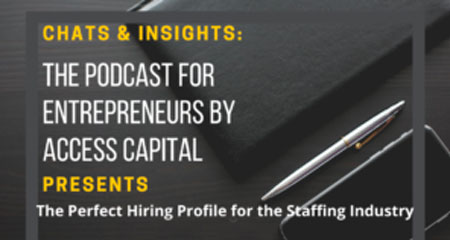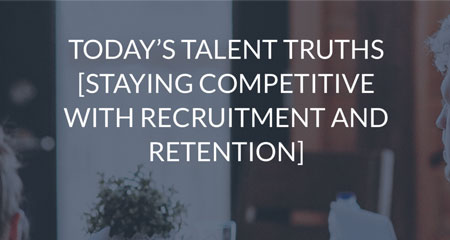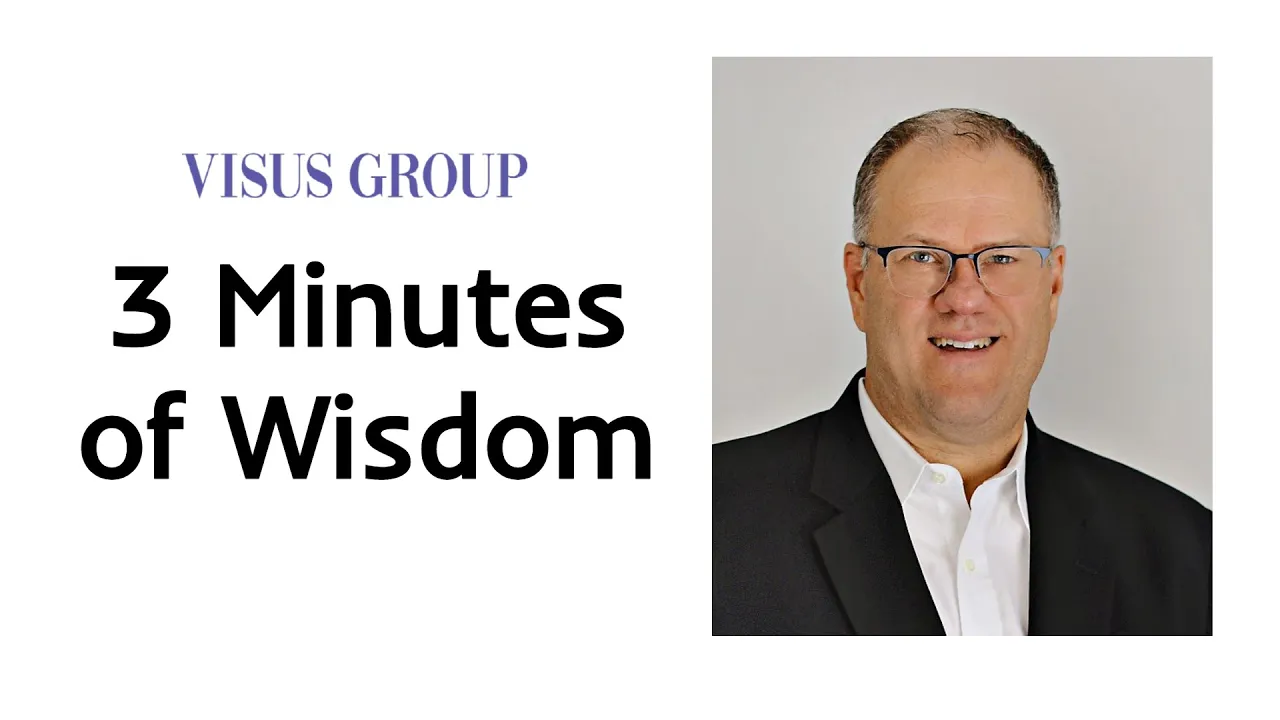Confused about identifying the right lawyer for you? Use the following guideposts to help with your search. Contributed by Visus Group Partner Jody McLeod, Founder & Principal at McLeod Legal Solutions.
Continue readingHow to find the right legal partner for your staffing or recruitment firm
As a business owner, it is common practice to eventually need to seek outside legal counsel or hire a law firm to represent your organization. The staffing and recruitment industry is no different. In fact, I might argue based on my nearly 30 years in the industry, that finding the right legal fit for your business is even more important given all the nuances with regards to employment law…after all, we are in the ‘people’ business. After a couple of recent experiences with my clients, I thought it would be timely to offer some advice to avoid common pitfalls when hiring legal representation.
Let’s start with a few examples where my clients were given legal advice from attorneys that did not have experience in the staffing industry.
Case Study #1
An owner of a staffing business had a solid B player that took a job with a competitor. The business owner’s attorney advised to take legal action against the employee and the competitor. I suggested going to the competitor and asking for a fee to buyout the non-compete. The non-solicitation could remain but make some money on a buyout. The pursuant owner of the staffing business spent more than $100k and lost on all counts. I don’t know if this is true, but I heard that 9 out 10 non-compete litigations go in favor of the employee. Very difficult to stop someone from making a living as a recruiter or sales executive.
Case Study #2
An owner of a staffing firm generating $8 million in annual revenue was selling the firm. The owner had a very solid offer from a very ethical staffing business that was north of $100 million in annual revenue. The structure of the deal was 70% cash at closing and 30% in an earnout. The person that was selling had an attorney that had never assisted in the sale of a staffing firm. The attorney was adamant about a “personal guarantee” from the owner of the buying firm, a staffing firm north of $100 million in annual revenue, let me remind you. There are so many other ways to guarantee such a transaction. The deal went sideways. (and then what)? Perhaps we come up with it went sideways and the buyers pulled their offer?
Paying for outside support is not usually the top choice for any business owner, however, the cost avoidance when hiring an expert, is worth it in the long run and can actually save you money in many cases. I have seen many smaller firms where they will have their CFO or HR resource review legal matters, however you have to ask yourself depending on the matter, is the risk worth it? When matters get more serious and with ever changing laws in the employment world, it is smart to engage legal support. When hiring an attorney or contracting for legal services here are a few things to consider in order to find the right fit for your business.
- Find an attorney and/or law firm that has staffing industry experience. An attorney and/or law firm that has staffing industry experience is extremely valuable. This is likely the most important criteria to use when choosing an attorney. Businesspeople not from the staffing industry look at the staffing industry as a “simple” business. Nothing could be farther from the truth. There are contracts and liabilities with buyers of staffing services. Be aware of the liability buyers attempt to push down to staffing firms. There are contracts between contractors and temporary employees as well as many legal requirements that need to be honored. Then there are internal employees with non-competes and non-solicitation agreements and compensation programs for senior level employees.
- Trust your intuition. Years ago, a client of mine taught me that you must sense that your attorney is acting in your best interest. My client told me that it is not anything logical, but rather it was more of an intuitive sense otherwise known as gut instinct. He said, “The first time you start thinking your attorney is padding the hours, then that is a sign that something is not right.” Your attorney and/or law firm needs to be a trusted advisor in which you have total and complete trust.
- One size does not fit all. Attorneys will specialize in areas of expertise such as workers compensation, mergers and acquisitions, human resources, general business, property, etc. Many small staffing firms will hire an attorney that is a “friend of a friend”. This is potentially a big mistake. Even a small staffing firm will likely need access to a handful of attorneys that specialize in various areas of specialty. One size does not fit all when it comes to legal advice. And reliably, high quality and professional legal advice is worth its weight in gold.
- The American Staffing Association (ASA) has your back. For all those that own and operate staffing firms in the United States, a quick question or inquiry to the attorneys at ASA can go a long way in getting proper guidance. I am a long-time member of the ASA and the attorneys on their staff have provided tons of high-quality advice to the Visus Group clients over the years. In addition, when I reach out to the ASA attorneys, I consistently get a professional and prompt response. Don’t forget the great resources available to you at your fingertips.
At the Visus Group we have a few alliance relationships with attorneys that have multiple years of staffing industry experience. If this is an area of concern for you or your staffing firm, feel free to reach out to us. We work with many staffing firms through our RoundTable programs who spend time addressing and discussing legal issues they are facing as well as use our program to share their networks with our members.
The Perfect Hiring Profile for the Staffing Industry
Considering an Upgrade to Your Technology Stack?
by Visus Group Partners Bill Ehrmantraut and Chris Leigeb, Principals at Strategic Value Partners
Top Considerations When Upgrading Your Technology Stack
Face it, if you are not continuously evaluating and upgrading your technology stack, you are losing ground in the highly competitive staffing industry. There are challenges:
- you did not build your business around being experts in technology.
- most staffing companies do not have the resources to have a full time Chief Technology Officer.
- technology is changing and evolving at breakneck speeds, it is hard to keep up.
Where to start? You need to begin with an assessment of your current technology. There is a wide spectrum where your company may land here. On the one end, you could be using a bunch of home-grown solutions that include a great deal of manual processes and fragmented vendors, that operate in silos that are not connected in any meaningful way. Or you may have be using one of the major staffing software solutions and taking advantage of integrated technology partners that allow for seamless data transfers. Most likely you fall somewhere in the middle. There are opportunities for improvement no matter where your company falls on this spectrum.
Let us dive into the assessment of your current technology to get your baseline.
- To truly understand your current state and help you in your technology upgrade, you must map out your current workflows and processes.
- What are your key performance indicators (KPI’s) and metrics you utilize in your business?
- Highlight areas of weakness. For example, where there are manual processes, duplicate entries between systems or databases, confusing or complex work arounds?
- If you’re using an ATS, how long has it been since you implemented, and have you stayed up to date on the upgrades, new functionality or new integrations?
- Does your organization fully utilize the systems that you already have? If not, why?
- Evaluate your size verses when you made previous investments, growth plans, expansions into new regions or new business verticals. What will be needed to service that business and feed that growth?
Now that you have your technology baseline, its time to explore the technology marketplace. It is mind boggling how many staffing software solutions are out there and the claims that are made regarding their capabilities. And there are more staffing software providers coming to market all the time. You need to know what technology providers to evaluate.
When you look at technology, there are two major components:
- Staffing Software ATS, System of Record -This is the main software that will be the heart and soul of your technology. In some cases, it is just the Front Office (Applicant Tracking System, Onboarding) and others it offers a full Front and Back Office (payroll, invoicing, AR and general ledger interface). Many of the larger ATS systems have added in many of the features and benefits as internal functionality that used to provided by outside vendors. These can include items such as paperless on-boarding systems, website interfaces, social media integrations, job board interfaces, business analytical tools, texting, scheduling, timekeeping solutions, ACA tools, E-verify, CRM components and other solutions that bring real value, and keep as much work as possible within the primary ATS.
- Ancillary Technology Vendors– these are vendors that provide critical technology solutions. They are typically more robust than some of the internal tools provided by the ATS and can often be integrated via open API’s or simple file transfers. Think automated timekeeping, payroll processing, scheduling, paycards, WOTC providers, health care providers, job board management, recruiting solutions, funding, automated texting/communication, video interviews, mobile capability, Chat Bots, AI Interface, call center software, and so many more.
If you have several partners that fall into the second bucket in that they are key to your business, you need to find a Staffing Software solution that is integrated with your most important partners or offer an open Application Programming Interface (API). An API is a way for data to be automatically pushed or pulled seamlessly between the Staffing Software and the integrated partner. It allows you to stay in your software system and not have to log into other systems to complete tasks or view reports. If one of your key technology partners does not have an integration, a work around would be ftp file transfers.
Keep your expectations in check here. Not all your partners will have an integration with a Staffing Software ATS. Also, understand that while both the ATS and the Vendor may have open API’s the programing work will still need to be completed and can be very expensive and take time.
Vetting Staffing Software ATS
We will focus most of this section on vetting the Staffing Software ATS. At this point you have evaluated your current workflows and identified weaknesses and gaps in your current process. Some key points:
- As you go through the vetting process, create an internal team made up of staff from a broad representation of your organization: Operations, Finance, HR, IT, Sales, etc. Too many times we see just IT personnel involved in this part of the process. Make no mistake, they need to be included, but omitting the other key areas from the vetting will likely lead to a bad outcome.
- How big is your company? What are your growth plans?
- What staffing vertical (s) are you in currently? What verticals are you contemplating to add in the future?
- Do you need a Front Office and Back Office Solution? (define these). Or just FO or BO?
- What is your budget?
- Is there a slower period in your typical work year that could be filled with a new implementation?
Once you have answered these questions, now it is time to start the interview process. We recommend you identify at least 3 and at most 6 Staffing Software companies to evaluate.
One thing to consider. You may think your incumbent software provider should not be in the mix as a candidate. You may think they have let you down or that they do not have the right technology for your business. Beware, the grass is not always greener on the other side. We have seen companies switch only to come back to their original vendor. Take this opportunity to let your incumbent know you are evaluating your software providers and you would like to include them in the vetting process. You may be surprised at what their capabilities are when you take a deep dive in an organized fashion. Also, it puts them on notice that you are looking, and you may get some better terms or attention now that they know they need to re-earn your business.
Key parts of the Staffing Software ATS evaluation:
- Map out your current processes and workflows and identify the areas that you would like to improve.
- What staffing verticals do they service? Does this line up with your core competencies and future plans?
- What is the culture? Is this a good fit for your business culture?
- What is currently available in their software and what is upcoming and when?
- Demos – This is a key part of the evaluation process. Have a list of items you want to see prior to the demo. Record the demo. Believe it or not, sometimes a company will demo something that is not live yet. Having a recording to refer to can be very helpful.
- References – get a good spectrum of references. Those that have been long term clients. Those that have recently gone live. Ask for companies that are of the same size and staffing vertical. Ask the tough questions. Understand most staffing companies will only give you references that are going to say good things. Do your best to find companies that are using the software that may not have been provided by the ATS and get their perspective.
As your go through the above process, you will be able to eliminate vendors and narrow your choice down to a top 2. This will provide you a good negotiating position as the vendors will be willing to provide their best offer. From here you should be able to select the Staffing Software partner that is right for your business.
Feeling like you do not have the expertise or resources to do an evaluation? This is where a knowledgeable consultant can be a godsend. They understand the marketplace and the capabilities of all the players. They can fill the gaps for you and manage or guide you through the process.
Now the fun part – Implementation of your new Software solution! This will be the subject of our next blog.
When it comes to technology in your staffing firm, address these five areas first.
Technology in the staffing industry sure has evolved over the last few years. Right now, there are over 400 hundred technologies that are currently supporting the staffing industry. That’s right, 400+ technologies! How do you know which ones are new? How do you know where to start? How do you know which ones are the best ones for your staffing firm?
What I frequently hear from my clients and members is this: “I’m a business owner of a staffing firm, someone with a sales background. How can I possibly know how to make the right decision on technology?” It’s a valid question and one that has a variety of answers. The first step is to really analyze where you currently are on the technology spectrum ranging from low-technology firms, a smaller firm or one that doesn’t use too many products, to an enlightened staffing firm, one that has built out their tech stack and understands how to leverage their IT department for greater efficiency. The reality is that many are on the former side.
The good news is that we are in a unique position, through our Presidents RoundTable, to get exposure to all the IT challenges that staffing firms of all sizes face on a weekly basis. Through all of these stories and consulting moments, we’ve identified five critical areas that staffing firms need to address within their IT strategy:
Align your technology stack to your business model.
What is your business model? Define it. Know it. Map it out. And then determine what is the best technology to help you implement that business model in the marketplace. The number one error we see staffing business owners make is that they get enamored with shiny new technology. Or, they hear from their Sales Reps & Recruiters, “We have to have this new technology! This new technology will be a game changer for us!”
The worst mistake you can make (as it relates to IT) is fitting the technology to your process. The replicable business model is the anchor (the key criteria) in which all decisions on technologies are judged against. It is that simple. A simple decision-making tree will help any staffing firm make far better IT decisions. And knowing what specific business model is being implemented.
Decide who will manage your technology.
The makeup of your IT department can have an enormous effect on how fast or slow you are to new technologies. There are essentially two structures – in-house IT or Outsourced.
Outsourcing: If you are a small Owner/Operator staffing business you really have no choice, but to outsource as your payroll is best served for recruiters and salespeople. In this model, you will be paying for work done, some monitoring, but you may not see the dedication this company may have to building an IT roadmap as they will be in maintenance mode for you. The key here is to find an IT Support firm that aligns with the size of your firm and has your firm’s best interest at heart.
In-house: If your firm is midsize to enterprise, then you will most likely have IT personnel on your staff. The biggest challenge here is having the right person in the right seat. When you do, they are truly your IT QB owning the roadmap, procuring powerful vendor relationships, and getting themselves involved in your business to help make your processes better through automation. On the other hand, we have seen staffing firms held hostage by in-house IT personnel that “had all the magic passwords” or were unwilling to think critically. There are a lot of fantastic IT professionals working in companies. You just want to make sure you have someone that does not put job security over the company’s best interest.
Think about your integration strategy.
Let’s be honest, there is no staffing firm 100% happy with the ATS they are currently utilizing. Every ATS has challenges, wonky processes, or lack of wish list items. Also, every ATS has challenges customizing to an individual staffing firm’s specific business model. Your business could be part of the problem. How? Let’s think about three things. (1) Not fully vetting the capabilities of the ATS to the business need. We know of several staffing firms that implemented an ATS and in less than 18 months later switched to another ATS. Why? Because they didn’t stick to their business model. Define it, know it, then go out and find the best ATS that helps you implement that business model in the marketplace. (2) No ATS will be perfect. Just accept this fact. There is a front office, middle office, and back office. The reality is that most of the ATS’ in the market are for front office needs – recruiting and sales. It is no surprise that the middleware and back office can be suspect in many ATS platforms due to their focus on candidates and placements. (3) Integrated System Versus Separate Systems: this is a very big decision. Do I have one system where my entire process is integrated or do I find a fantastic front office and then find a separate middleware technology and back-office technology that becomes semi-integrated into that fantastic front office technology? There are pros and cons to both strategies and it just matters how this works with your business model. Also, a final consideration here is identifying your subject matter experts or those super-users who will help ensure the technology is running and all are abiding by the process.
Acquire a true technology leader.
As many of you know, we sponsor peer RoundTables through the Visus Group. Over the last several years, we have been asked to start a CIO RoundTable on many occasions, but we failed to get traction from this type of RoundTable. This RoundTable was meant to provide an outlet and community for IT leaders to discuss tech stack, current trends, and product roadmaps. Why did this fail to attract a following and what information did we gather from this? Outside of a lack of demand, it told us that many staffing firms really do not have a “true” technology leader on their staff. Rather, these staffing firms had “director-level” personnel on staff focused less on strategy and more on infrastructure and tech support. Instead, the technology strategy and roadmap responsibilities fell under the COO. In my opinion, this is not the right approach for larger staffing firms. Regional and national staffing firms need a true CIO on staff because technology is transforming the staffing industry at a record pace. Having an experienced technology leader on your leadership team ensures you have someone who understands how to evaluate new technology and translate it into current processes and overall roadmap.
Secure your technology budget.
The most important part of the equation – a technology budget. When you add up your tech stack costs between servers, ATS, phone, hardware and software to run your business, it all adds up quickly! Yes, this is all part of your IT budget, but is this a true representation of your entire IT spend? And can you calculate any cost savings or ROI? Many of our clients don’t know where to start or end with budgeting and determining the true ROI (return on investment) on technology investments. Our rule of thumb is this, if you invest in innovative technology and it does not increase the average gross profit production per internal production personnel, then it must not be the right technology for your business.
Technology has become an enormous area for staffing firms to conquer with the onset of new players and the pandemic increasing the need for digital transformation. As mentioned, these are the five areas I would circulate to my leadership team if I were in your shoes at your staffing firm. How can you correctly identify the technology that will work best for your firm without sacrificing wasted investment, additional processes or underutilized platforms? This is where the Visus Group comes in. We assist staffing firms by assessing their existing tech stack and make prudent decisions which align with your business model. Don’t get caught making the wrong decision – let’s chat!
Preparing for the Successful Sale of Your Staffing Firm
Whether it’s motivated by a planned exit strategy that leads to retirement, or perhaps other compelling reasons, careful planning for the future sale of your staffing business, along with understanding how to maximize the value received for your business, is time well spent.
Continue readingToday’s Talent Truths
Seven Most Common Mistakes to Avoid When Making a Staffing Firm Acquisition
With over 20,000 staffing and recruitment firms in the industry, there are always mergers and acquisitions that occur. According to Duff and Phelps research 115 staffing industry M&A transactions were completed by 96 unique buyers in 2020. This was a 20% decrease from the 143 transactions completed in 2019. Strategic buyers accounted for 85% of the staffing industry acquisitions in 2020, with private equity funds (financial buyers) investing in new platform acquisitions accounting for the other 15% of transactions.
Of the 115 transactions reported in the 2020, 44 involved companies whose predominant service offering was IT staffing and/or IT consulting. Healthcare staffing is another historically attractive sector, with 16 transactions completed in 2020.
We’re seeing that in this post-Covid era, a lot of staffing firms are in the market to acquire, but unfortunately, few do it well. Buying a small competitor or acquiring in a new market to get into that market sounds fun and sexy. The fact of the matter is that there are tons of places to make mistakes, whether it be wrong fit, not enough education of the financial indicators, or just being a novice to the valuation process.
In this short blog, I am going to outline some of the common errors I see buyers making in their attempts at acquiring a small to midsize staffing firm.
- Synergy & Trust: The number one thing a buyer needs to do at the onset is to establish synergy and trust with a seller. In fact, a buyer needs to actively build synergy and trust through the entire process. Why? No seller is going to sell their company to a person or group they do not trust. It is that simple. Building trust takes time and work. I see it often overlooked.
- Breaks in Communication: No news is bad news. Setting up weekly or bi-weekly calls to stay connected, move the process along, resolve issues, establish credibility, walk through information given and received is critical to success. When there are breaks in communication a buyer is simply communicating to a seller that they are not interested. Not good.
- Lack of Flexibility: No two deals are the same. No two sellers are the same. Buyers may have a preferred way in which to acquire a company, but when buyers approach the market with a “one size fits all” strategy, specifically regarding to the way they plan on structuring the payout of the acquisition, then they are just going to leave a lot of potential deals on the table.
- Lawyers: I see this error often with new buyers. Namely, they utilize a lawyer that does not have staffing industry experience. Big mistake. A buyer’s legal provider is likely to have M&A council on staff, but how much experience does this council have in getting staffing acquisitions across the finish line. I have seen a lot of deals go sideways simply because the buyer’s lawyer did not have the expertise in staffing.
- Lack of Focus: Nail down an acquisition profile and stick to it. Yes, stick to the profile. Such a profile is going to address the issues of size, geography, staffing niche, etc. Going to the market haphazardly or “opportunistically”, as I commonly hear, is only going to set up a buyer to waste a lot of time chasing a lot of deals that are only going to get washed. Get focused and stay focused.
- Money: Get the money lined up and secured. To start looking for acquisitions prior to having a bank on board and money lined up is only going to delay the process of acquiring a company. It is also going to communicate red flags to a seller. Most sellers will require “proof of funds”. The point here is to get your bank on board on the front end prior to going to the market.
- Not Using a Cultural Assessment: This is so effective in understanding if an acquisition is going to be a good fit. Find a tool or hire a consultant to conduct a cultural assessment on the buyer. Understand the buyer’s cultural preferences. Survey the potential acquisition using the same cultural tool. Determine if the acquisition target has cultural preferences that match the buyers. If a buyer acquires a firm where there is not a good match, post-acquisition is going to be ugly.
Here are just seven points here where buyers make common mistakes when acquiring companies, but there are many more. I will tell you, if you want to lose a lot of money, go do an acquisition without the appropriate assistance.
Here at the Visus Group we have 75+ staffing firms in our RoundTable program and over half of these members are actively seeking acquisitions. If you are looking to get orientated into doing acquisitions, think about our advisory services or joining a RoundTable and learning from staffing firms that have a track record of successfully getting deals done.
Creating a World-Class Sales Team
In our conversation with Mary Ann McLaughlin, Managing Partner of Butler Street, we learned that in building a world-class sales team, management’s key to-do’s include creating a sense of belonging and a certainty with the rules of engagement. Knowing and selecting for the right profile is also key to building a great team. Listen to Mary Ann’s thoughts and comments and you are bound to pick up a tip or two!
Continue readingNow is the Time to Invest in Technology
This is a fantastic interview with Michael Whitmer, Global CIO of RGF Staffing. How do we invest in technology? Think four dynamics: simplification, digitization, innovation and hyper automation. Mike, in a very short time, unpacks a great investment strategy. He also shares his thoughts on personally making the best of a challenging situation. A must watch!
Continue reading









